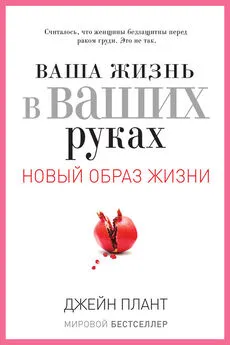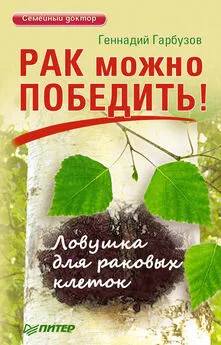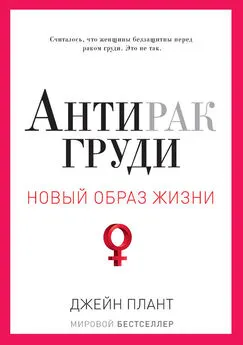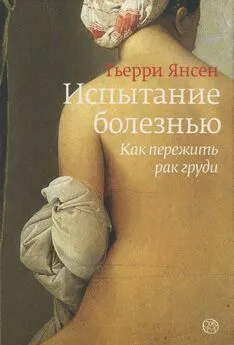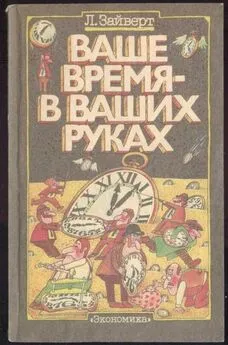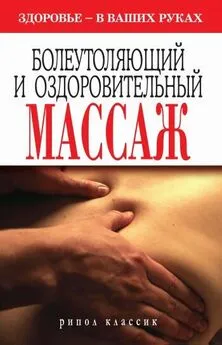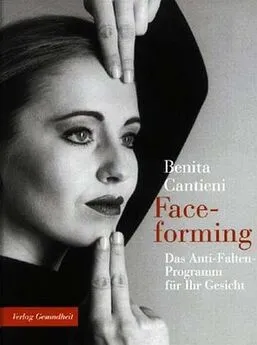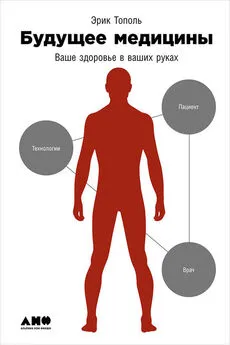Джейн Плант - Ваша жизнь в ваших руках. Как понять, победить и предотвратить рак груди и яичников
- Название:Ваша жизнь в ваших руках. Как понять, победить и предотвратить рак груди и яичников
- Автор:
- Жанр:
- Издательство:Литагент «РИПОЛ»15e304c3-8310-102d-9ab1-2309c0a91052
- Год:2012
- Город:Москва
- ISBN:978-5-386-05255-3
- Рейтинг:
- Избранное:Добавить в избранное
-
Отзывы:
-
Ваша оценка:
Джейн Плант - Ваша жизнь в ваших руках. Как понять, победить и предотвратить рак груди и яичников краткое содержание
Рак груди – непонятная и пугающая тема. Суровые факты шокируют: основная причина смерти женщин от 25 до 75 лет – различные формы рака, и рак молочной железы – один из самых смертоносных. Это современное бедствие уже приобрело характер эпидемии. Но книга «Ваша жизнь в ваших руках» написана не для того, чтобы вы боялись. Напротив, это история о надежде.
Пройдя путь от постановки страшного диагноза к полному выздоровлению, профессор Плант на собственном опыте познала все этапы онкологического лечения, изучила глубинные причины возникновения рака груди и составила программу преодоления и профилактики этого страшного заболевания. Благодаря десяти факторам питания и десяти факторам образа жизни от Джейн Плант ваша жизнь действительно будет в ваших руках.
Ваша жизнь в ваших руках. Как понять, победить и предотвратить рак груди и яичников - читать онлайн бесплатно ознакомительный отрывок
Интервал:
Закладка:
50. Hinuma, S. and others, 1998. A prolactin-releasing peptide in the brain. Nature , 393 (6682), 272–276.
51. Smith, S.S. and others, 1986. Presence of luteinising hormone-releasing hormone (LHRH) in milk. Endocrinol Exp., 2 °C2-3), 147–153; Koldovsky, O., 1989. Search for the role of milk borne biologically active peptides for the suckling. J.Nu-tr., 119 (II), 1543–1551; Nair, R.M. and others, 1987. Studies on LHRH and physiological fluid amino acids in human colos-treum and milk. Endocrinolologia Experimentalise 21 (1), 23–30.
52. White, M.E. and others, 1986. Milk progesterone concentrations following simultaneous administration of buserelin and cloprostenol in cattle with normal corporal lutea. Canadian Journal of Veterinary Research , 50 (2), 285–286; Dinsmore, R.P. and others, 1989. Effect of gonadotropin-releasing hormone on clinical response and fertility in cows with cystyic ovaries, as related to milk progesterone concentration and days after partarition. Journal of the American Veterinary Medical Association, 195 (3), 327–330.
53. Berseth, C.I. and others, 1990. Postpartum changes in pattern of gastrointestinal regulatory peptides in human milk. Am J Clin Nutr, 51 (6), 985–990.
54. Berseth, C.I. and others, 1990. Postpartum changes in pattern of gastrointestinal regulatory peptides inhuman milk. Am J Clin Nutr, 51 (6), 985–990.
55. Flood, J.F. and others, 199L Increased food intake by neuropeptide Y is due to an increased motivation to eat. Peptides , 12 (6), 1329–1332.
56. Amarant, T. and others, 1982. Luteinising hormone-releasing hormone and thyrotropin-releasing hormone in human and bovine milk. European Journal of Biochemistry , 127 (3), 647–650; Baram, T and others, 1977. Gonadotropin-releasing hormone in milk. Science , 198 (4314), 300–302.
57. Koike, K. and others, 1997. The pituitary folliculo-stellate cell line TtT/GF augments basal and TRH-inducedprolactin secretion by GH3 cells. Life Sei , 61 (25), 2491–2497; Tyson, J.E. and others, 1975. The influence of prolactine secretion on human lactation./ Clin Endocrinol Met ah, 40 (5), 764–773.
58. Grochowska, R. and others, 1999. Stimulated growth hormone (GH) release in Friesian cattle with respect to GH genotypes. Reproduction Nutrition Development, 39 (2), 171–180; Bourne, R.A. and others, 1977. Serum growth hormone concentrations after growth hormone or thyroid-releasing hormone in cows. Journal of Dairy Science, 60 (10), 1629–1635.
59. Chomczinsky, E and others, 1993. Stimulatory effect of thyroid hormone on growth hormone gene expression in a human pituitary cell line. / Clin Endocrinol Metah, 77 (1), 281–285; Reynolds, A.M., 1991. The effects of chronic exposure to supra physiological concentrations of 3,5,3-triiodo-L-thyronine (T3) on cultured GC cell s. Journal of Cellular. Physiology, 149 (3), 544–547.
60. Tenore, A. and others, 1980. Thyroidal response to peroral TSH in suckling and weaned rats. American Journal of Physiology, 238 (5), E428-430.
61. Slebodzinski, A.B. and others, 1998. Triiodothyronine (T3), insulin and characteristics of 5’-monodiodinase (5’-MD) in mare’s milk from partarition to 21 days post-partum. Reproduction Nutrition Development, 38 (3), 235–244.
62. Fujimoto, N. and others, 1997. Upregulation of the estrogen receptor by triiodothyronine in rat pituitary cell lines. Journal of Steroid Biochemistry and Molecular Biology, 61 (1–2), 79–85.
63. Koldovsky, О., 1989. Search for the role of milk borne biologically active peptides for the suckling. J Nutr, 119 (11), 1543–1551; Buts, J.P., 1998. Bioactive factors in milk, (in French.) Arch Pediatr , 5 (3), 298–306.
64. Faulkner, A., 1998. Insulin-like growth factor concentrations in milk and plasma after growth hormone treatment. Biochemical Society Transactions , 26 (4), S386; Baldini, E. and others, 1994. In vivo cytokinetic effects of recombinant human growth hormone (rhGH) in patients with advanced breast carcinoma. Journal of Biological Regulators and Homeostatic Agents, 8 (4), 113–116; Scheven, B.A. and others, 1991. Effects of recombinant human insulin-like growth factor-1 and -2 (IGF) and growth hormone (GH) on the growth of normal adult human osteoblast-like cells and human osteogenic sarcoma cells. Growth Regulation, 1 (4), 160–167; Hodate, K. and others, 1990, Plasma growth hormone, insuline-like growth factor-1, and milk production response to exogenous human growth hormone-releasing factor analogs in dairy cows. Endocrinolo-gia Japonica, 37 (2), 261–273.
65. Koldovsky, O., 1989. Search for the role of milk borne biologically active peptides for the suckling. J Nutr, 119 (11), 1543–1551; Buts, J.P., 1998. Bioactive factors in milk, (in French.) Arch Pediatr, 5 (3), 298–306.
66. Westrom, B.R. and others, 1987. Levels of immunoreactive insulin, neurotensin, and bombesin in porcine colostreum and milk. / Pediatr Gastroenterol Nutr, 6 (3), 460–465; Ehman, R. and others, 1985. Bombesin, neurotensin and pro-gamma-mel-anotropin in immunoreactants in human milk. Regulatory Peptides, 10 (2–3), 99-105.
67. Shutt, D.A. and others, 1985. Comparison of total and free cortisol in bovine serum and milk colostreum. J Dairy Set, 68 (7), 1832–1834.
68. Vaarala, O. and others, 1998. Cow milk feeding induces antibodies to insulin in children – a link: between cow milk and insulin-dependent diabetes mellitus? Scandinavian Journal of Immunology 47 (2), 131–135; Slebodzinsky, A.B. and others,
1998. Triiodothyronine (T3), insulin and characteristics of 5’-monodiodinase (5’-MD) in mare’s milk from partarition to 21
days post-partum. Reprod Nutr Dev , 38 (3), 235–244; We-strom, B.R. and others, 1987. Levels of immunoreactive insulin, neurotensin, and bombesin in porcine colostreum and milk. J Pediatr Gastroenterol Nutr , 6 (3), 460–465.
69. Ferrando, T. and others, 1990. Beta-endorphin-like and alpha-MSH-like immunoreactivities in human milk. Life Sei , 47 (7), 633–635.
70. http://www.13.waisays.com/cancer2.htm; Newcomb, P.A. and Egan, K.M., 2006. Dairy food and ovarian cancer risk. The Lancet , March 2006, 797–799; Stang, A. and others, 2006. Adolescent milk fat and galactose consumption and testicular germ cell cancer. Cancer Epidemiology and Biomarkers Prevention , 15,2189–2195.
71. Maruuchi, T. and others, 1998. Effects of gonadotropin-releasing hormone agonist on rat ovarian adenocarcinoma cell lines in vitro and in vivo .Japanese Journal of Cancer Research, 89 (9), 977–983; Kuroda, H. and others, 1998. Human chorionic gonadotrophin (hCG) inhibits cisplatin-induced apoptosis in ovarian cancer cells: possible role of up-regulation of IGF-1 by hCG. Int J Cancer , 76 (4), 571–578; Kurbacher, C.M. and others, 1995. Influence of luteinising hormone on cell growth and С A 125 secretion of primary epithelial ovarian carcinomas in vitro. Tumour Biology , 16 (6), 374–384; Manetta, A. and others, 1995. Inhibition of growth of human ovarian cancer in nude mice by luteinising hormone-releasing hormone antagonist Cetrorelix (SB-75). Fertility and Sterility , 63 (2), 282–287.
72. Reiter, E. and others, 1999. Effects of pituitary hormones on the prostate. Prostate , 38 (2), 159–165; Lamharzi, N. and others, 1998. Luteinising hormone-releasing hormone (LH-RH) antagonist Cetrorelix inhibits growth of DU-145 human androgen-independent prostate carcinoma in nude mice and suppresses the levels and mRNA expression of IGF-2 in tumors. Regulatory Peptides , 77 (113), 185–192; Jungwirth, A. and others, 1997. Luteinising hormone-releasing hormone (LH-RH) antagonist Cetrorelix (SB-75) and bombesin antagonist RC-3940-2 inhibit the growth of androgen-independent PC-3 prostate cancer in nude mice. Prostate , 32 (3), 164–172; Maeza-wa, H. and others, 1997. Potentiating effect of buserelin ace-täte, an LHRH agonist on the proliferation of ventral prostatic epithelial cells in testosterone-treated castrated rats. Int J Urol ,
4 (4), 411–416; Using, АЖ and others, 1993. Serological precursors of cancer serum hormones and risk of subsequent prostate cancer. Cancer Epidemiol Biomarkers Prev , 2 (1), 27–32; Garde, S. and others, 1993. Effect of prostatic inhibiting peptide on prostate cancer cell growth in vitro and in vivo. Prostate , 7 (2), 183–194.
73. Bosland, M.C., 1996. Hormonal factors in carcinogenesis of the prostate and testis in humans and in animal models. Progress in Clinical and Biological Research , 394, 309–352.
74. Chapman, S. and others, 1992. Changes in adult cigarette consumption per head in 128 countries, 1986–1990. Tobacco Control , 1,281–284.
75. http://www.who.int
76. Chapman, S. and others, 1992. Changes in adult cigarette consumption per head in 128 countries, 1986–1990. Tobacco Control, , 1.281–284.
77. http://www.who.int
78. http://www.13.waisays.com/cancer2.htm
79. Underwood, L.E., D’Ercole, J.A. and Van Wyk, J.J., 1980. So-matomedin-C and the assessment of growth. Ped ClinN Amer,
27, 4, 771–782, and Perdue, J.E 1984. Chemistry, structure and function of insulin-like growth factors and their receptors: a review. Can J Вiochem Cell Bio , 62, 1237–1245.
80. http://vw.com/healthnews/milk.html
81. Pollack, Michael, 2003. Cancer, aging and IGF physiology. Meeting of the Royal Society of Medicine in London in October 2003, entitled „Biology of IGF-I: its interaction with insulin in health and malignant states cc.
82. Lonning, Per Eystein, 2003. IGF-I and breast cancer. Meeting of the Royal Society of Medicine in London in October 2003, entitled „Biology of IGF-I: its interaction with insulin in health and malignant states cc.
83. Yee, Doug, 2003. Targeting the IGF system for anti-tumour therapy. Meeting of the Royal Society of Medicine in London in October 2003, entitled „Biology of IGF-I: its interaction with insulin in health and malignant states cc.
84. Pollack, Michael, 2003. Cancer, aging and IGF physiology. Meeting of the Royal Society of Medicine in London in October 2003, entitled ‘Biology of IGF-I; its interaction with insulin in health and malignant states’.
85. Holly, Jeff, 1998. Insulin-like growth factor-1 and new opportunities for cancer prevention. Lancet , 351, 9113, 9 May, 1373–1375.
86. Chan, J.M., Stampfer, M.J., Giovannucci, E. and others, 1998. Plasma insulin-like growth factor-I and prostate cancer risk; a prospective study. Science , 279, 563–566; Harman, S.M., Metter, E.J., Blackmail, M.R., Landis, EK. and Carter, H.B., 2000. Serum levels of insulin-type growth factor 1 (IGF-I), IGF II, IGF-binding protein-3, and prostate-specific antigen as predictors of clinical prostate cancer. J Clin Endocrinol Metab , 85, 4258–4265; Stattin, E and nine others, 2000. Flasma insulin-like growth factor-I insulin-like growth-binding proteins, and prostate cancer risk: a prospective study. J Natl Cancer Inst , 92, 1910–1917; Chokkalingam, A.F, and 12 others, 2001. Insulinlike growth factors and prostate cancer: a population-based case-control study in China. Cancer Epidemiol Biomarkers Prev, 10, 421–427; Chan, J.M., Stampfer, M.J., Ma, J. and others, 2002. Insulin-like growth factor-I (IGF-I) and IGF binding protein-3 as predictors of advanced-stage prostate cancer. J Natl Cancer Inst , 94, 1099–1106; Mantzoros, C.S., Tzonou, A., Signorello, L.B. and others, 1997. Insulin-like growth factor 1 in relation to prostate cancer and benign prostatic hyperplasia. British Journal of Cancer , 76, 1115–1118; Wolk, A., Mantzoros, C.S., Anders-son, S.O. and others, 1998. Insulin-like growth factor 1 and prostate cancer risk: a population-based, case-control study. J Natl Cancer Inst, 90, 911–915; Holly, J.M.E, Gunnell, D.J. and Davey Smith., G, 1999. Growth hormone, IGF-1 and cancer. Less intervention. Less intervention to avoid cancer? More intervention to prevent cancer. J Endocrinol, 162, 321–330.
Читать дальшеИнтервал:
Закладка:
